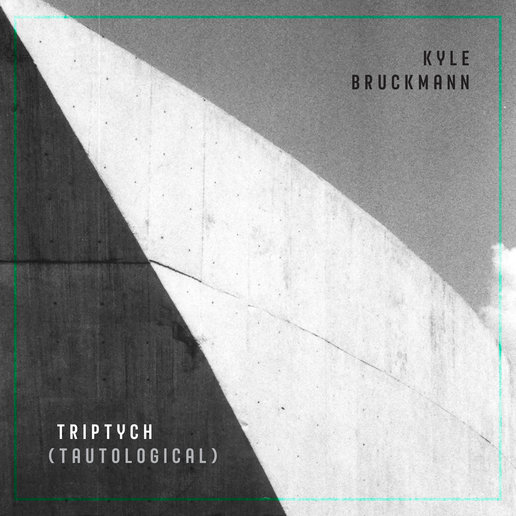- A Spurious Autobiography for John Barth (live electronics version)
- An Extruded Introversion for Blixa Bargeld
- A Spurious Autobiography for John Barth (oboe/English horn version)
- A Fuzzy Monolith for James Turrell
” . . . fine, acerbic, hugely colorful . . . ” Brian Olewnick
” . . . a twitching, elongated performance that sounds like a Foley artist’s best efforts to score a lunar landing scenario using telephone and reed instrument components. . . ” Bill Meyer
(excerpt from a live performance of An Extruded Introversion for Blixa Bargeld at ESS, Chicago, 10.21.2019)
Recorded in the UCSC Recital Hall by William Coulter. Mixed and mastered by Myles Boisen, Guerrilla Audio and Headless Buddha Mastering Labs, Oakland CA.Photo: Lenny Gonzalez. Design/layout: BMoen, Etch Image Co. Thanks also to Scott Makson, UCSC Music Department Electronics Technician, Tom Djll, Larry Polansky, and everyone at the Mills College Center for Contemporary Music.
These pieces arose together as attempts to re-integrate my practices of composing, improvising, and performing contemporary ‘concert music’ on the oboe, which I felt had been developing along separate paths for too long. I owe thanks to Tom Djll, whose invitation to contribute to a ‘solo + extensions’ night at Luggage Store Gallery, San Francisco, in 2015 provided a key catalyst.
Composing for ensembles, I’m always trying to strike a balance between overarching form and procedures that permit surprises and encourage risks. My colleagues are such great sports about the awkward and often rather slapstick situations I often put them in; tackling new solo work, I felt responsible to find similar ways of leaving myself hung out to dry, moving at least a step beyond the inevitable linearity of a ‘tape piece.’ The attempted solution here involves multiple banks of pre-recorded materials that cycle randomly and independently. So, like a mobile, the overall effect remains relatively constant while the discrete materials’ relationship to each other – and one’s perspective of them – can never be definitive. I respond to these environments in real time, making for a complementary set of rather naked auto-concertos, each with its own special kind of existential terror.
They all trouble themselves, in some way, with a fundamental crisis: how to transform a hermetic creative practice into an outward-facing product with sufficient payoff for anybody else – a thing in the world that can justify not only its own existence, but mine as an artist. Like all of life, a balancing act: here, between the megalomania of presuming anyone else should care about a public display of introspection, and the humility required in striving to ensure anyone could.
In A Fuzzy Monolith for James Turrell (2015), I was also interested in dragging myself away from over-reliance on extremities of extended technique and towards a careful attention to pitch, interval, and motive. But that’s my problem. What I hope to convey to the listener is some semblance of the surprisingly moving impact that can arise from work that aims directly for a hijacking of the perceptual system. I love how Turrell’s works are somehow simultaneously so monumental and so tender. They require time and presence – you don’t look at them, you have to inhabit them – but with patience you rather suddenly realize that the very way you’re physically experiencing light has changed. Figure and ground flip; proximity and distance get mushy; you see yourself seeing.
A Spurious Autobiography for John Barth (2015) is a framework for confronting head-on pitfalls of solo improvisation – the sneaking suspicion that, in the wake of ‘developing a voice,’ one’s just doing the same damn things over and over in infinitesimally different contexts. I fed, in two separate passes, the entirety of my first solo album, entymology (2000), through the circuitry of the classic modular EMU synthesizer housed at UC Santa Cruz. I then placed a few hundred of the chopped-up results into a structure that digitally flings distortions of overly familiar materials at me in unpredictable orders and combinations. The effect is one of strapping myself into a personal-hell monkey-mind batting cage for your voyeuristic amusement. I perform it regularly playing oboe and/or English horn; the realization on the first track, featuring instead a single-pass improvisation on live analog electronics, takes on a somewhat darker hue, imagining a post-oboe life.
An Extruded Introversion for Blixa Bargeld (2016) is my most recent and likely last stop along this line of inquiry. The dedication is maybe a notch more oblique than that of the others. Discovering the seminal German industrial/Dada provocateurs Einstürzende Neubauten as a 14-year old marked a sort of aesthetic Year Zero for me. I could gush about all that the band meant to me at the time; what seems relevant here, though, begins with their self-immolating front man as model of ‘the performative body,’ his physicality an undeniably central component of his music. Another dimension involves the role I projected onto them as I myself began to navigate overlapping worlds of classical music, contemporary art, and rock & roll’s more bastard offspring. I concluded years ago that they were the perfect heirs to German Romanticism – a logical, if grotesque, conclusion that linked them from the far side of the breaking point directly back to Weber’s Der Freischütz. I began this piece with the explicit intent of maintaining more ego-less poise and equanimity than I’ve yet achieved elsewhere – trying to contend in my own way with the gauntlet gently proffered by the Wandelweiser collective, another form of Germanic extremism entirely – in order to make something unapologetically…well, beautiful. In the end, I can’t deny the ghosts I see poking through the rent fabric all the same: of the histrionic, and of the Sublime’s taunting brass ring.

